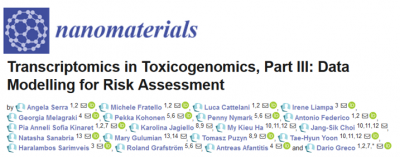Development of Deep Learning Models for Predicting the Effects of Exposure to Engineered Nanomaterials on Daphnia magna
Abstract This study presents the results of applying deep learning methodologies within the ecotoxicology field, with the objective of training predictive models that can support hazard assessment and eventually the design of safer engineered nanomaterials (ENMs). A workflow applying two different deep learning architectures on microscopic images of Daphnia magna is proposed that can automatically…









